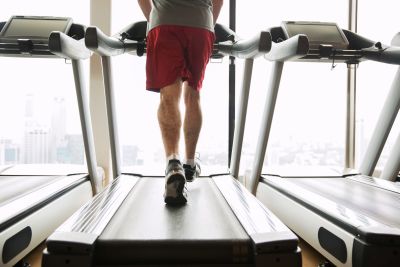What does science know about the relationship between physical activity and COVID-19, and what still needs to be investigated? Bruno Gualano, a professor at the University of São Paulo’s Medical School (FM-USP) in Brazil, answers these two questions in an editorial published recently in the British Journal of Sports Medicine.
“As speculated at the start of the pandemic and now consistently proven, physically active people tend to experience a milder form of the disease caused by SARS-CoV-2. Taken together, all research on the subject suggests that the risk of hospitalization is between 30% and 40% lower on average for such people,” Gualano told Agência FAPESP.
He noted, however, that this research has been conducted in different countries with genetically and demographically different populations, and that studies have focused on different outcomes, with some selecting hospitalization, others prognosis for hospitalized patients, and yet others vaccine-induced immunity, for example. In addition, definitions of severe COVID-19 vary significantly.
Generally speaking, the research published to date considers physically active subjects to be those who get at least 150 minutes per week of moderate exercise or 75 minutes per week of high-intensity exercise, as recommended by the World Health Organization (WHO).
“People who follow this recommendation tend to be younger and less obese, and to have fewer chronic diseases,” Gualano said. “However even when we control for these confounders [by means of statistical analysis], physical activity correlates with a better prognosis, meaning less likelihood of hospitalization and death.”
An article by Gualano and collaborators published in the same journal in July 2021 showed that the disease tends to take a mild form in professional athletes. “In this study, we raised the hypothesis that protection can be especially robust in people who get plenty of exercise, such as professional athletes, but this remains to be confirmed,” he said.
Conversely, there is evidence that athletic performance may be impaired by persistent symptoms of infection (long COVID), such as fatigue. “Researchers have also speculated that athletes run a greater risk of developing inflammation in the heart [myocarditis or pericarditis] after contracting the disease, although the studies conducted on this topic are still controversial,” he noted.
A question that has yet to be clarified is whether having a career in sports or athletics is a predictor of a better prognosis among hospitalized COVID-19 patients. A study led by Gualano and involving 209 patients hospitalized at Hospital das Clínicas (HC), the hospital complex run by FM-USP, suggests it is not (more at: agencia.fapesp.br/35154/).
In contrast, a Spanish study involving 552 patients, conducted retrospectively and published in Infectious Diseases and Therapy concluded that for severe patients the risk of dying was six times lower when they had a history of physical activity. “However, recall bias cannot be ruled out [in the case of this Spanish study], since questionnaires were completed up to 120 days after discharge, and for those who died, patients’ relatives provided the data,” Gualano writes in the editorial.
The extent to which physical activity can boost the response to COVID-19 vaccines, even in immunosuppressed patients, was demonstrated for CoronaVac in a study led by Eloisa Bonfá, Clinical Director of HC-FM-USP, and published in August 2021, with Gualano as first author (more at: agencia.fapesp.br/36651/).
“Our findings are promising because they open up an interesting avenue for research that’s highly relevant to current trends,” Gualano said. “We know that vaccine effectiveness declines over time and that physical activity can be one way to prolong it. That’s clear from the scientific literature on vaccines for other diseases, such as flu.”
Most publications on the topic describe retrospective studies based on an analysis of patients’ physical activity histories, clinical records and outcomes after being cured or dying, as well as cross-sectional studies in which the link between physical activity and progression of the disease is observed at a particular time, such as while patients are hospitalized.
For Gualano, researchers should now set up studies in which they follow physically active volunteers for a long period, starting before they are infected and continuing until an outcome can be identified. The results should then be compared with those for sedentary subjects, serving as a control group.
“Large-scale randomized and controlled trials could validate the data obtained in observational studies, helping to produce knowledge about the ideal recommendation regarding physical activity to prevent severe COVID-19. The same goes for validating data regarding the effect of physical activity on the response to vaccination,” he said.
He also stressed the importance of studies with experimental models to build up knowledge about the molecular and cellular mechanisms that underlie the effects of physical activity in COVID-19.
“We also need to find out whether physical activity can mitigate transmission and reinfection by SARS-CoV-2, and whether exercising regularly can help prevent or treat long COVID. Funding is required for all this research,” he said.
The lessons learned in almost two years of intensive research on COVID-19, in conjunction with the knowledge acquired previously on the immune system and the clinical physiology of exercise, serve as a foundation for what Gualano called “a global call to action in terms of promoting physical activity during this and future pandemics,” especially among people with impaired immune systems and people with chronic diseases.
“Healthcare managers should think of promoting physical activity as a strategy for preventing complications from both the acute form of COVID-19 and long COVID. Studies show that the risk of severe health problems, especially cardiovascular disease, increases in the months following infection. Promoting a healthy lifestyle not only protects the population but also reduces the burden on the healthcare system,” he said.
Source: São Paulo Research Foundation (FAPESP)
